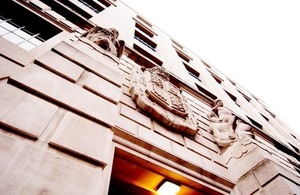UK confirms position as leader in carbon markets
The UK confirmed its global reputation as a centre for traded carbon markets today, as the UK’s first auction for Phase III allowances of the…

The UK confirmed its global reputation as a centre for traded carbon markets today, as the UK’s first auction for Phase III allowances of the EU Emissions Trading Scheme (EU ETS) took place in the City of London.
London is now the hub for 90% of EU carbon trading and 80% of global carbon trading - a £90 billion market.
Minister of State Greg Barker said:
“The UK is really leading the way in carbon auctioning, and today’s sale reaffirms London’s position as a global hub for the market.
“Not only does this help incentivise significant emission reductions and behaviour change amongst businesses, but it also generates millions of pounds in revenue each year for the Treasury, at little or no cost to the taxpayer. This is a win-win, which makes both environmental and economic sense”.
**David Peniket, President and COO, ICE Futures Europe said: **
“Today’s successful auction of Phase III allowances on the ICE auction platform on behalf of the UK government represents a new milestone in the development of European emissions trading.
“ICE is committed to continuing to help deliver liquidity and transparent price discovery for this important market”.
This first UK auction of Phase III allowances held today was hosted by ICE Futures Europe, the Exchange platform, which was appointed in April 2012 to host the UK auctions.
The auction sold 6.5 million EUAs with an Auction Clearing Price of €6.62, raising approximately 34 million pounds for the exchequer.
During Phase II of the EU ETS (ending this year), the UK held 30 successful competitive auctions, selling almost 123 million EU allowances (EUAs) and raising approximately £1.3 billion for the exchequer.
Each EUA represents an entitlement to emit one tonne of carbon dioxide equivalent gas.
During Phase III (2013-2020), the UK will sell approximately this number of allowances every year.
Emissions trading establishes the price of greenhouse gas emissions, which allows the market to determine the most economically efficient method for businesses to reduce their emissions.
Auctioning provides the most efficient way of distributing allowances to the market and reinforces the ‘polluters pay’ principle which encourages businesses to factor in the cost of carbon into the decision they make.
The EU ETS is central to the Government’s policy for reducing emissions; around 50% of the emissions reductions that the UK has achieved to date have been incentivised by the scheme.
The UK has been a leader in the development of carbon auctioning, being one of the first countries to auction in phase II and one of the Member States to sell the most allowances during that phase. This latest auction reaffirms London’s position as the leader in this expanding market.
The UK is also taking steps towards introducing a stronger Carbon Price Floor for the generation sector. This will ensure that proper incentives are put in place within the market to support the low-carbon economy.
Notes for Editors
- ICE Futures Europe was selected to host the UK’s auctions following a competitive tendering process. Prior to this, the auctions were run by the Debt Management Office, a Treasury Agency. However, new EU legislation for Phase III means that the DMO can no longer host the UK’s auctions.
- Phase III sees the first sale through private company IntercontinentalExchange (ICE) working in partnership with Government.
- Phase III of the EU ETS is expected to deliver emission reductions of 3,100 MtCO2e (relative to 2005 levels) over the period 2013 to 2020. There will also be an expansion in the number of sectors and gases included.
- The carbon allowances are auctioned to companies within member states to cover the emissions they will produce from 2013-2020 (Phase III).
- The exact number of allowances to be auctioned by each Member State over the period 2013-2020 is still subject to final determination by the European Commission.
- The EU ETS was introduced by the European Union in 2005 to help meet its greenhouse gas emissions target of 8 percent below 1990 levels under the Kyoto Protocol. The first learning phase ran from 2005 - 2007, and Phase II runs from 1 January 2008 until 31 December 2012. Phase III starts on 1 January 2013.
- Europe wide there are around 11,000 installations in the EU ETS monitoring and reporting emissions to agreed guidelines with around 1,000 in the UK.
- The EU ETS targets emissions from electricity generation and the main energy-intensive industries such as; iron & steel; mineral processing industries such as cement manufacture; pulp and paper processing industries; glass and chemicals.
- ICE Futures Europe is Europe’s largest energy and emissions exchange and the home of Brent and Gasoil, the world’s crude and refined oil futures benchmarks. In addition to the leading emissions market, ICE Futures Europe also lists European natural gas futures and options contracts. All ICE Futures Europe contracts are cleared thought ICE Clear Europe, ICE’s London based clearing house, clearing an average 2.6 million energy futures contracts each trading day.
- For more information please see the DECC website and ICE Futures Europe website.